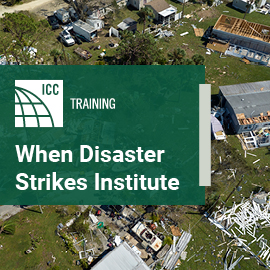
Enhancing resiliency with BCSA cement concrete
Belitic calcium sulfoaluminate (BCSA) cement offers design and construction professionals a chance to work with a concrete mixture that does not shrink and sets quickly, reaching 31.026 MPa (4500 psi) compressive strength in about one hour. This is a completely different binder than Portland cement, but one with a long history of successful use in a variety of applications.
For contractors, the key is learning how to take advantage of and control the unique properties of BCSA-based concrete to perform repairs that can be returned to service within hours, exhibit near-zero shrinkage, and are durable and crack-free. Concrete made with BCSA cement is not a miracle — it is carefully engineered material science that simply requires knowledge to be used effectively.
The material
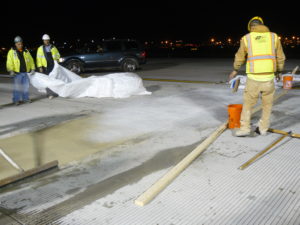
BCSA cement has been around since 1975. The hydration reaction of BCSA is such that all the free water is consumed at a very early stage in the creation of ettringite crystals. This means flatwork using BCSA cement concrete does not bleed. Therefore, the pores and capillaries are much smaller than those created in Portland cement concrete by rising bleed water. The result is lower permeability and very low drying shrinkage.
The most commonly cited disadvantage of BCSA cement is the cement cost, which can be up to three times that of normal Portland cement. The reason for the increase in price is the inclusion of aluminum in the cement to produce the calcium sulfoaluminate (CSA) compound. However, in applications requiring rapid return to service and a durable repair, the price of the cement is offset by the time savings associated with the project. Time is much more costly in the scope of a project than BCSA cement.
For first-time users, there are also some concerns with the amount of working time when using rapid-setting mixes. This is a big issue with other fast-setting Portland cement-based systems, but the setting time of BCSA cement is highly controllable with commercial retarders. Most mix designs have about 10 to 20 minutes of working time, which can be easily extended to 30 to 45 minutes.
Specifying BCSA
BCSA cement is available in a variety of formulations, including:
- straight cementitious material (mixed 1-2-2 with sand and 9.5- to 19-mm [3/8- to ¾-in.] stone in 22-kg [50-lb] bags or bulk tankers, with one low-permeability variation available with or without fly ash);
- repair mortar (BCSA cement and sand premixed in bags for normal conditions or with additional additives to meet high durability needs such as those in transportation applications);
- concrete mix (premixed with sand and stone); and
- plastering cement (able to be applied in coatings from 9.5 to 51 mm [3/8 to 2 in.] thick).
The applicable ASTM material specifications for the various formulations of rapid-setting cement and concrete include ASTM C1107, Standard Specification for Packaged Dry, Hydraulic-cement Grout (Nonshrink), and ASTM C928, Standard Specification for Packaged, Dry, Rapid-hardening Cementitious Materials for Concrete Repairs. Recently, some specifiers have begun referencing ASTM C1600, Standard Specification for Rapid-hardening Hydraulic Cement.
Placing BCSA concrete
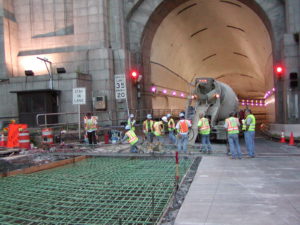
Surface preparation for repairs made with BCSA cement concrete is identical to surface preparation for any concrete repair and just as essential for success. All damaged concrete must be removed, the matrix must be free of contaminants and dust, and reinforcing steel must be free of rust. If additional steel is needed to replace steel that has lost too much cross-section or if dowels are to be used, those need to be in position prior to starting the work.
Due to its rapid strength gain, BCSA cement concrete is most often produced using volumetric mixers because this allows for the most flexibility. It can also be made in a central mix plant onsite or the aggregate mix may be sent to the site without cement. For one repair at the mouth of the Lincoln Tunnel in New York, for example, the producer sent a sand and stone mix to the job site and then the BCSA cement was added there.
Given BCSA cement’s typical working time of 20 minutes after water is introduced, the contractor needs to have everything ready prior to mixing. The installation process is similar to that of regular concrete, apart from this shorter working time. For smaller installations, portable drum mixers or drill-mounted paddle mixers are appropriate and mixing should take only one to three minutes. The manufacturer’s directions for the amount of mixing water should be followed and the material should never be re-tempered, as doing so would be detrimental to strength.
There will be little to no bleeding with BCSA cement concrete. The final finish must be applied as soon as possible. Then, as soon as the moist sheen dissipates, the surfaces should be wet cured for at least one hour or curing compounds can be applied.
According to some frequent users of the material, rapid-setting BCSA cement concrete is easy to use compared to Portland cement concrete and more forgiving.
“What I like about it is it’s predictable,” says Mike Schilling, general manager of East Coast Poured Floors. “Yet, just like with Portland cement mixes, you need to have control over everything: the temperature of the dry mix, the temperature of the water and the amount of water. We actually weigh the water rather than measure the volume so it’s exact.”
As with any construction using cementitious materials, safety is an important consideration. Dry BCSA cement can release respirable silica dust, so dust protection rules should be followed. If it is dusty, one should use a respirator with an assigned protection factor of 10 based on Occupational Health and Safety Administration guidelines when handling the powdered material. The wet material is alkaline like Portland cement concrete, so waterproof gloves, eye protection and skin protection are necessary.
Resiliency
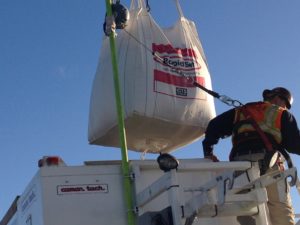
Disaster-resilient structures continue to gain recognition around the world as natural hazards, including hurricanes, storm surge, earthquakes, fires and tornados increase in number and severity. A concrete structure’s ability to withstand these natural disasters is multi-faceted and relies on adopting and implementing stringent building standards, codes and disaster-resilient engineering practices, all of which must be supported by high-quality, durable materials.
BCSA concrete meets the demanding performance requirements of disaster-resilient structures. By eliminating shrinkage cracking, reducing permeability, improving abrasion and impact resistance, providing absolute sulfate resistance, and protecting the reinforcement from contaminants that accelerate deterioration and failure, BCSA concrete maintains the long-term integrity and designed service life of the structure.
When used in emergency repair materials, BCSA helps improve safety on-site by gaining strength quickly and maintaining it for the life of the placement. Rapid return to service in one to three hours helps minimize exposure to unsafe conditions for construction teams, law enforcement, commuters and pedestrians and contributes to a more efficient recovery.
Applications
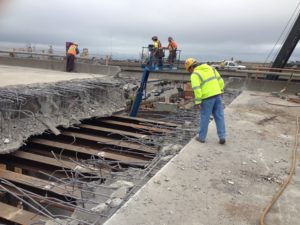
The California Department of Transportation (Caltrans) first used BCSA concrete for concrete repair of a mainline highway in 1994 following the Northridge earthquake. Two major overpasses collapsed, requiring use of a material that would allow a rapid return to service. This project was an overwhelming success, as it was finished weeks before the estimated completion day. This led Caltrans to begin using BCSA cement concrete for its Individual Slab Replacement program, which requires the overnight replacement of damaged sections of concrete highway pavement. An estimated nearly 1,000 lane-miles of BCSA cement concrete have been placed in California alone.
Another recent project employing BCSA concrete involved replacement of the hinges on a bridge on Interstate 280, leading into San Francisco. As the bridge was a vital artery into the city, these major repairs had to be completed in a very condensed time frame so as not to disrupt traffic any more than necessary. The work was done over three holiday weekends in the summer of 2014.
To ensure they were ready, the contractor, Golden State Bridge, and the concrete producer, Precision Concrete Materials, built a 12-m3 (16-cy) mockup on the ground six weeks prior to the Memorial Day construction closure of the bridge. The concrete for the mockup was made in volumetric mixers and pumped to simulate the onsite setup. The real-life closures were limited to 100 hours, during which 7 to 9 m (25 to 30 ft) of the existing bridge on either side of the hinge was demolished, formwork and prefabricated reinforcing steel cages positioned and 99 m3 (130 cy) of BCSA concrete placed, finished and cured.
The concrete mix was designed to achieve compressive strength of 8.274 MPa (1200 psi) in three hours and 24.132 MPa (3500 psi) in four hours and the bridges reopened well before the required time. After four years, the hinges exhibit no distress.
“I travel over this bridge regularly and as far as I can tell there are no stress cracks on the surface, although I haven’t been able to inspect the underside of the hinge replacements,” said Caltrans Bridge construction manager Roberto Luena.
BCSA cement and the rapid-setting concrete it makes provide performance and speed advantages when the job needs to be done quickly and the repair needs to be durable. However, it is crucial to have the knowledge and experience to be able to handle this fast-setting material.




